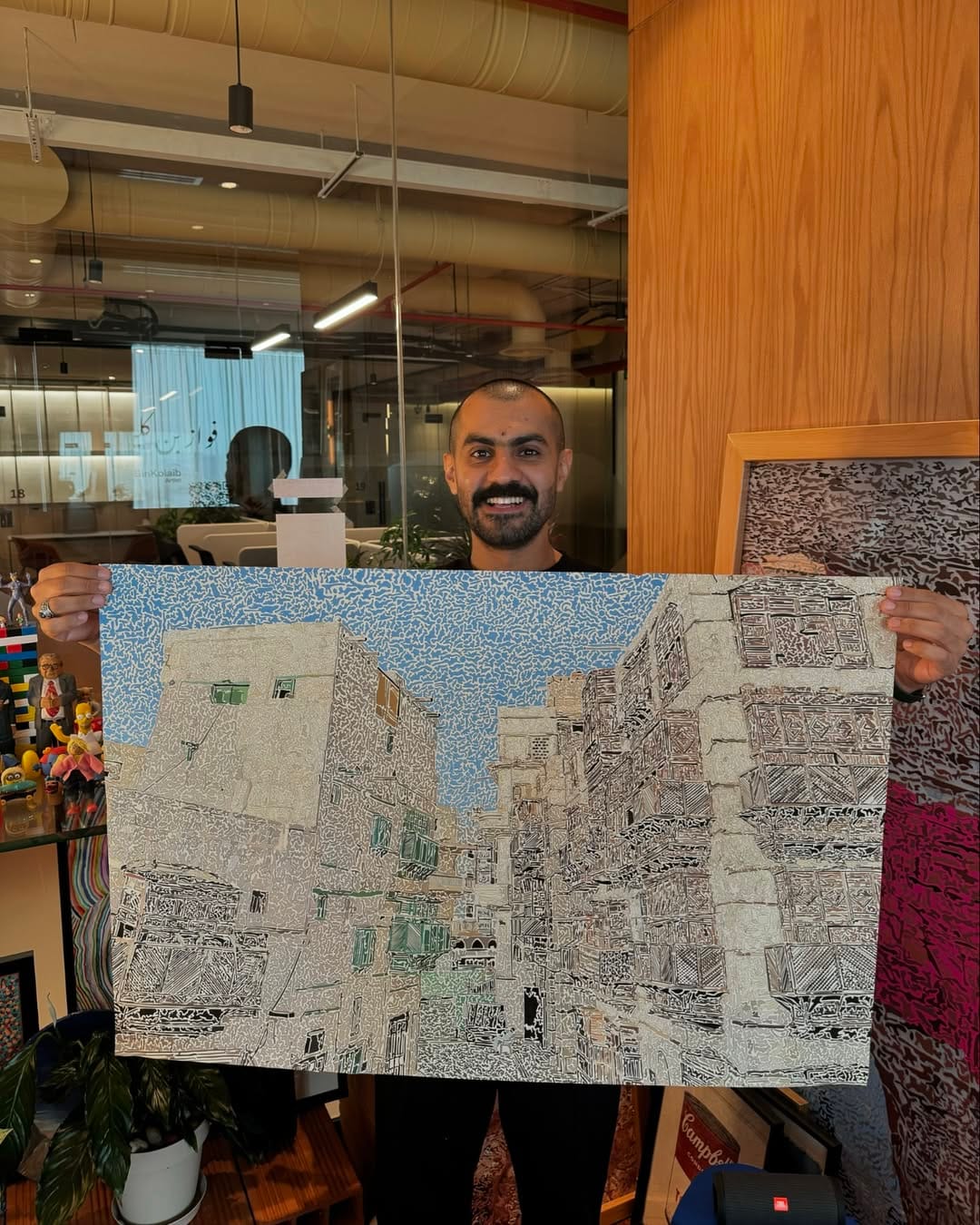
“I like to give to the world without expecting anything back.”
A door inside Huna AlHabib in Jeddah opens to a studio that feels like a city in miniature. Mini characters and model cars line the shelves; the walls are tiled with artworks gifted to him by friends and strangers. It is a living map of relationships, and the perfect setting for an artist who treats generosity as a method.
Inside The Studio, A Living Archive


Q: Your studio feels like a living archive. Why all the miniatures and cars?
A: Some I’ve collected myself, and others are gifts. People bring me pieces, small characters, cars, prints, and they become part of the space. I like the energy of different hands and histories around me. It reminds me to stay humble and connected.
Q: When did this collecting begin?
A: Very long ago, years back. When I was a small scale artist, someone gave me a chance to exhibit in a very big gallery. I was moved. After that, I decided to keep the door open. If someone gave me a lift, I should be that person for others.
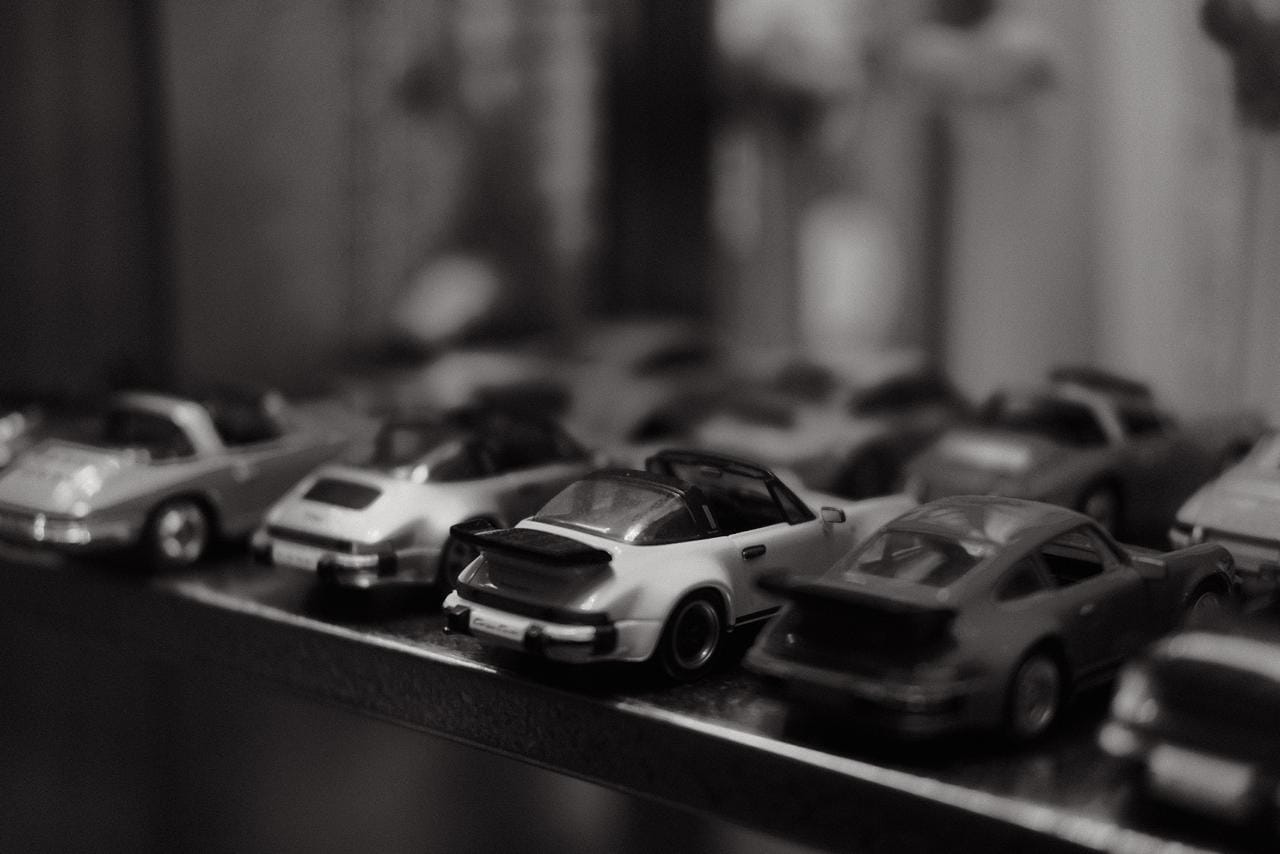
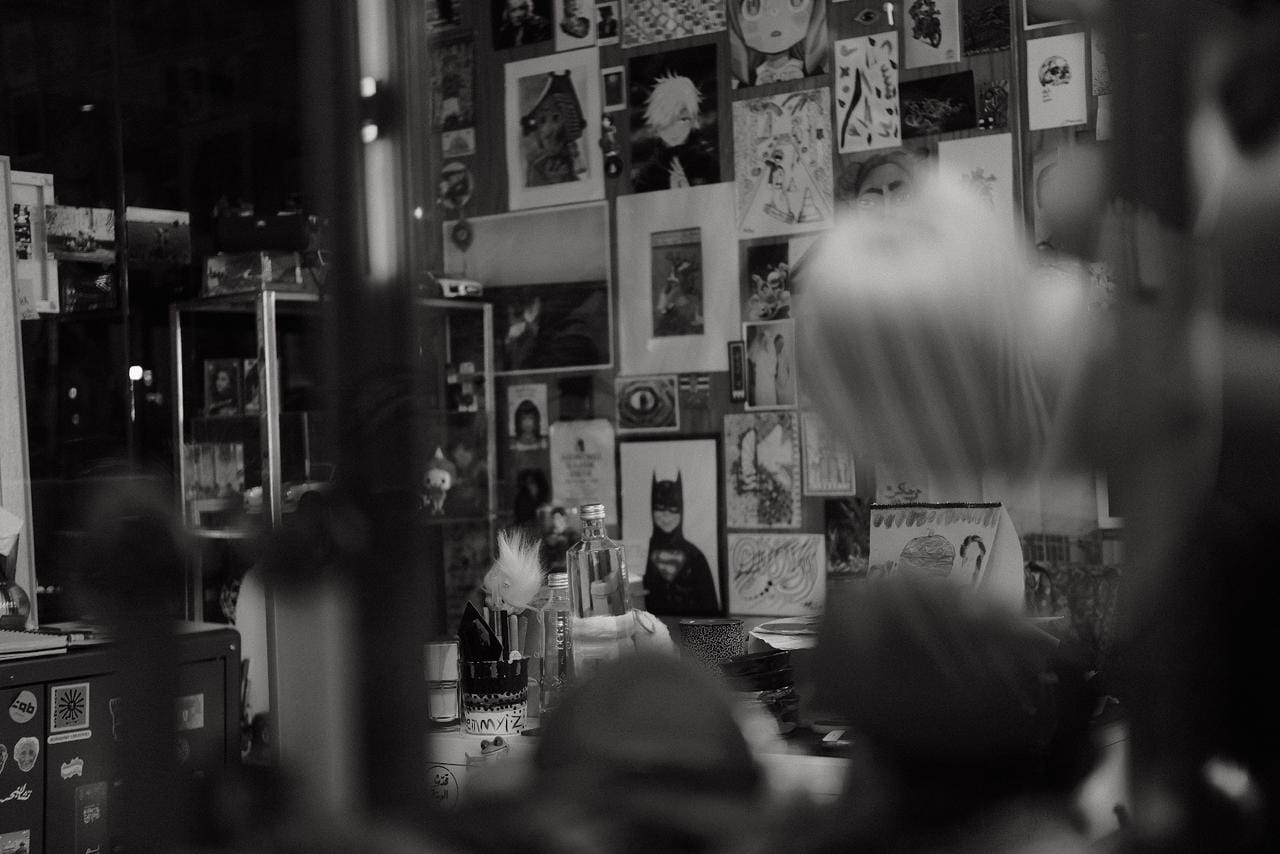
From Small Scale To A Big Break
He remembers the moment as a hinge in his life. A young artist with a steady practice and little visibility is offered a prominent platform. The experience does not inflate his ego. It expands his sense of responsibility.
Q: You often say that generosity finds its way back. Has there been a moment that really showed you this?
A: Yes, once at Ithra. It started very casually, almost like an accident.
Q: How did that encounter at Ithra begin?
A: When I first came back from the US, I stopped by Ithra without any plan. Someone asked me if I was there for a job, and I joked, “No, but if there’s one, I’ll take it”. He took me to an office where I met someone responsible for exhibitions. During our conversation, I gave him a small artwork as a gift. Before I left, he promised me: “Before I leave Ithra, I’ll make sure you have an exhibition here.”
Q: Did you believe that promise at the time?
A: Honestly, no. Years passed, and like many artists, I received invitations that never went anywhere.
Q: And did that promise ever come true?
A: Yes. Years later, they called me about a solo exhibition. At first I didn’t believe it. Too many people had called before with promises that went nowhere. But when they asked for my budget and then transferred the money immediately, I realized it was real. Alhamdulillah.
Q: How did it feel when the exhibition finally opened?
A: It was overwhelming. I had worked day and night to prepare, but I didn’t imagine the scale until I saw my pieces filling the gallery.
Q: Was the man who promised you there?
A: Yes. He came up to me, pointed at one of the works, and asked, “Do you remember this picture?” I said no. Then he told me he was the one I had given it to years ago, and he had kept his word. I was shocked and deeply moved. After the exhibition ended, I wrapped that artwork and left it behind at the gallery as a gift for the man who had kept his promise.
Q: Looking back, what did that experience teach you about art and trust?
A: That even the smallest gesture matters. You never know which act of generosity will come back to you, and when it does, it can change everything.
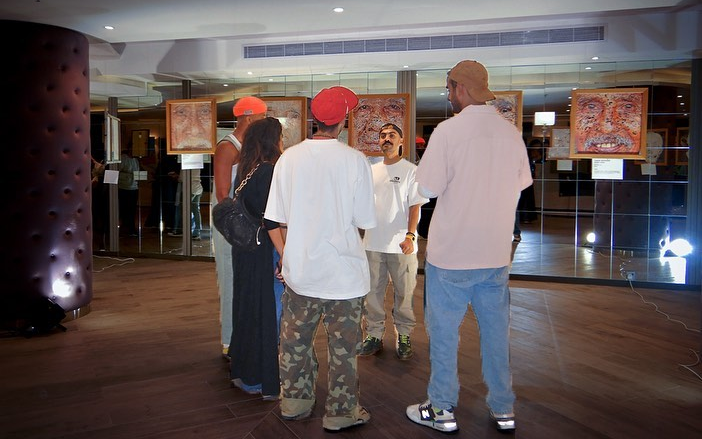
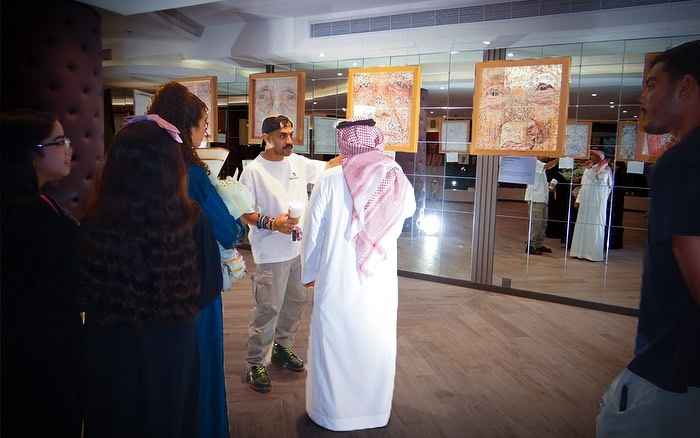
From Riyadh To Houston And Back
Q: Can you take us through the journey that eventually led you back home?
A: After graduation I toured the US to see how art can affect societies. When I returned to Riyadh I worked for a few months at an art gallery and learned the rhythms of exhibitions from the inside. Then I set out again, traveling for more than a year and documenting what I saw through street photography. When I came back home, I began a project I call "Seeinmyiz".
Journeys That Trained The Eye

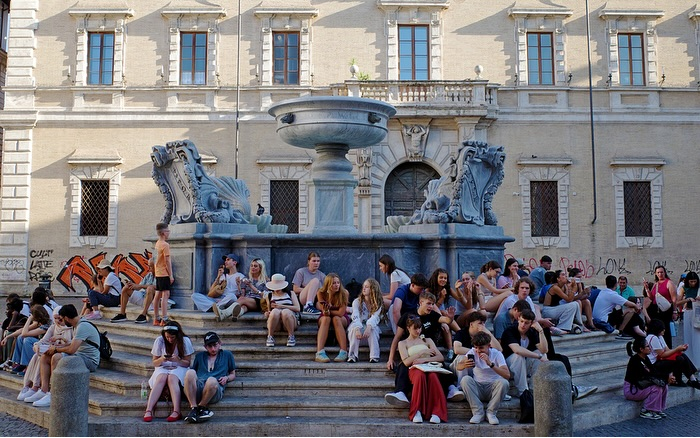
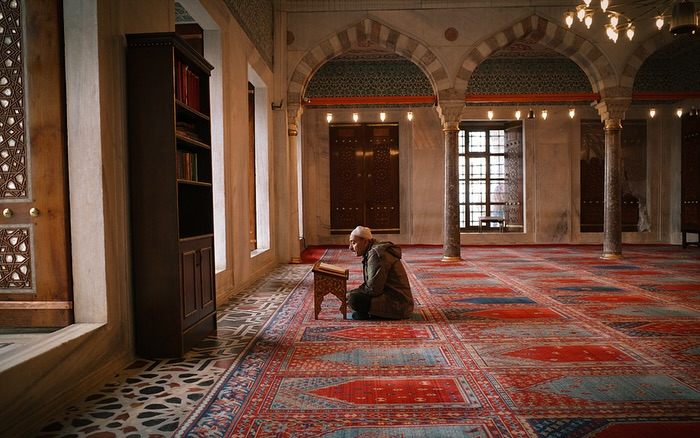
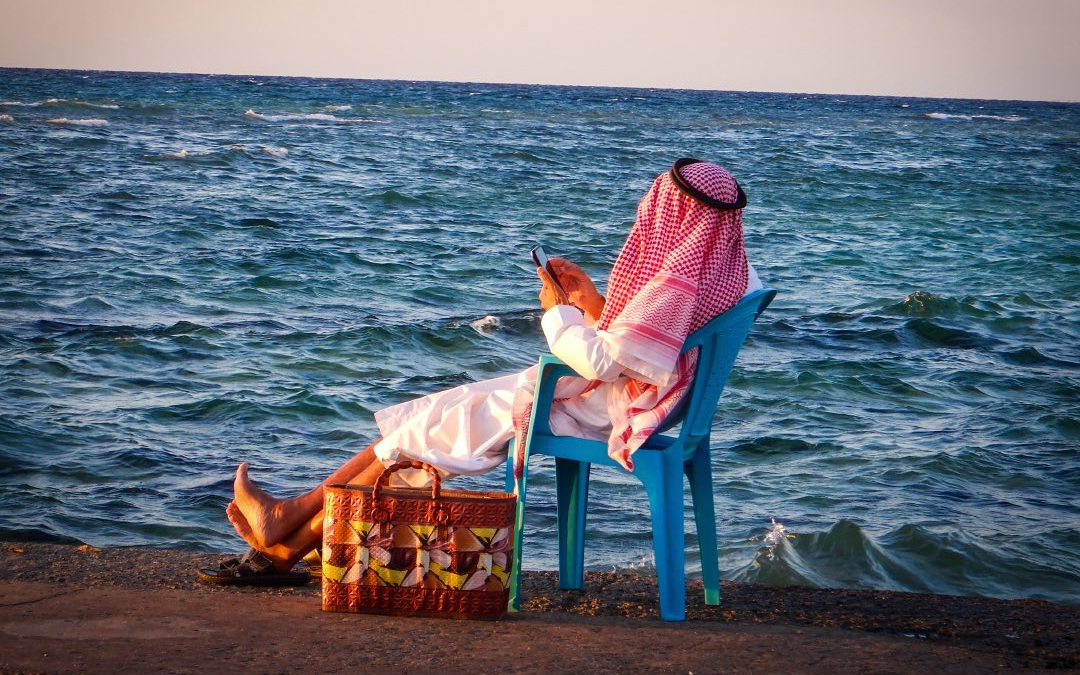
Before the book and the portraits, came the walking. Countries across Asia, the Middle East, Europe, and the United States. For more than a year he moved through streets with a camera, listening with his eyes.
Q: What did travel do for your vision?
A: Travel slows you down. You learn to listen with your eyes. I practiced street photography across those places, then brought the moments back home and started shaping them into Seeinmyiz.
Giving As Practice
Q: You often send your art to people who inspire you. No invoice, no ask. Why?
A: Because it is a gift. I like to give to the world without receiving in return. Sometimes people assume I want something back, but I don’t. The act of sending a piece is enough. It is simply gratitude, shared.
Q: How does that ethos shape your day-to-day?
A: It makes the studio feel open. The work circulates. I am not waiting for a trade, only for the piece to find the person it belongs to.
Art Exchange Wednesdays
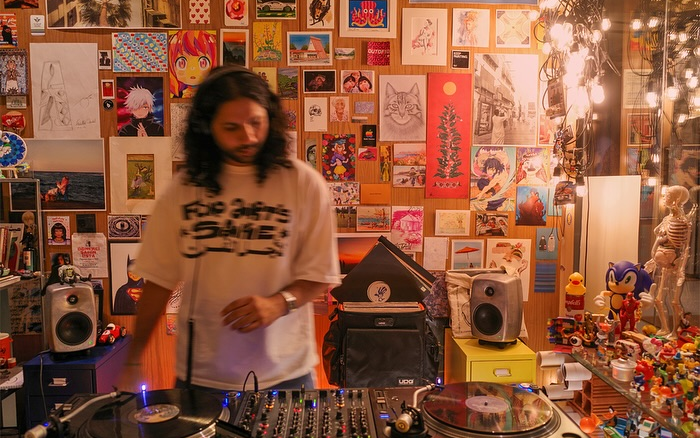
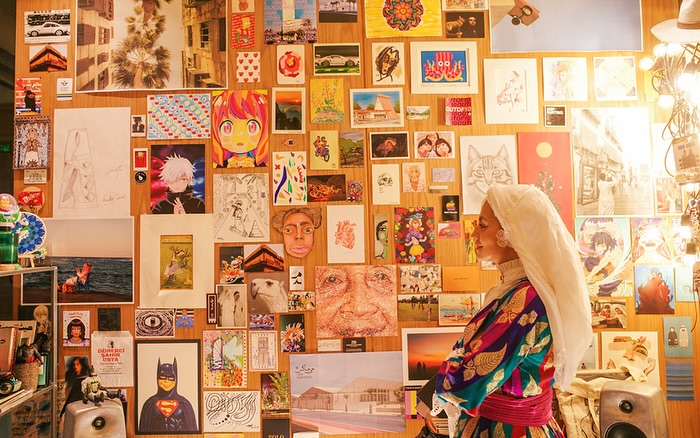
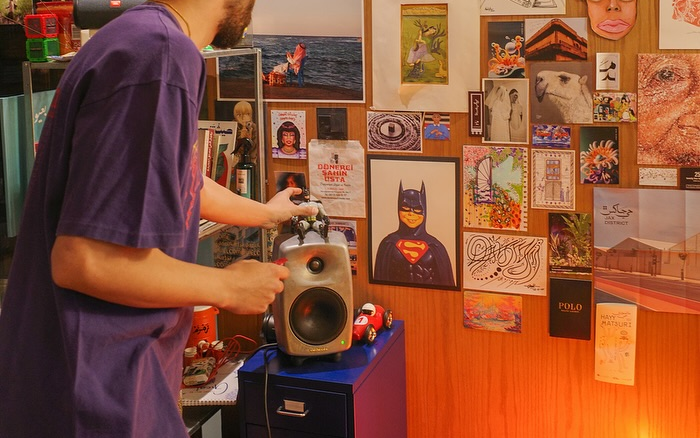
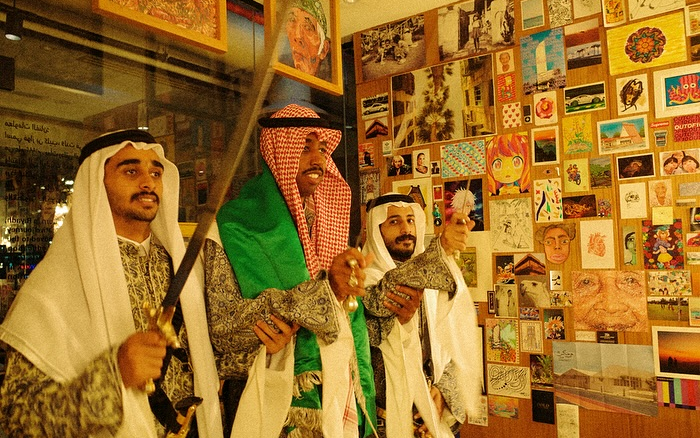
Every Wednesday, his office at Huna AlHabib turns into a soft gathering. Artists, friends, and the art curious arrive with sketches, prints, notes, and objects. They trade. They talk. They let the work circulate.
Q: What happens at the Art Exchange?
A: The atmosphere is relaxed, almost effortless. People come and give each other art. Someone leaves with something new. Someone else leaves lighter. We practice community, not competition.
Technique: Digital Drawing With Care
Q: What do you mean by digital drawing?
A: I draw using software with an electronic pen and a pad. Each mark is deliberate, almost like stitching. It lets me sit with the face, stay present, and build respect into the portrait.
Seeing Elders, Seeing Ourselves


Q: Your recent work honors the elderly. Why have they become central to your imagery?
A: Faces carry time. When I draw an elder, I slow down and respect the story written there. I started with nine portraits and shared them with those I met, especially the younger generation, as a way to challenge stereotypes about aging. These conversations with elders are always gentle, always generous. Their stories arrive full of love, resilience, and a creativity that refuses to fade.
Recent and Next
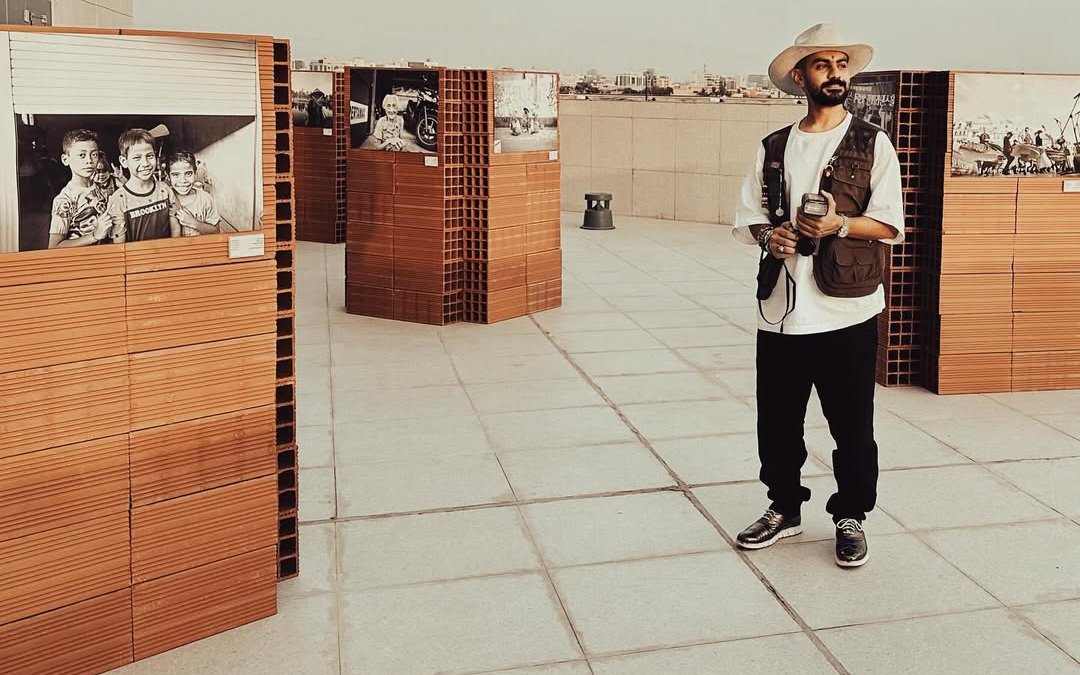
He continues to expand Seeinmyiz, to photograph and illustrate what the eye learns on the street, and to send artworks out into the world like letters. The Wednesday Art Exchange keeps growing. Visitors step into a room of small characters and leave with a larger sense of community.
Why It Matters
Fawaz Binkolaib’s practice is a quiet proposition for Saudi culture in motion. Travel becomes a classroom. Gifting becomes a method. A studio becomes a commons. In a moment when visibility can feel like currency, he reminds us that the most enduring economy in art is generosity.
Follow Fawaz Binkolaib’s journey on Instagram at @fawaz_designs. You can also attend the Art Exchange at Fawaz Binkolaib’s studio in Huna AlHabib every Wednesday. (check his Instagram for updated timings.)
Are you an artist with a story to share?
We’d love to hear from you! Contact us to be part of our next interview.

